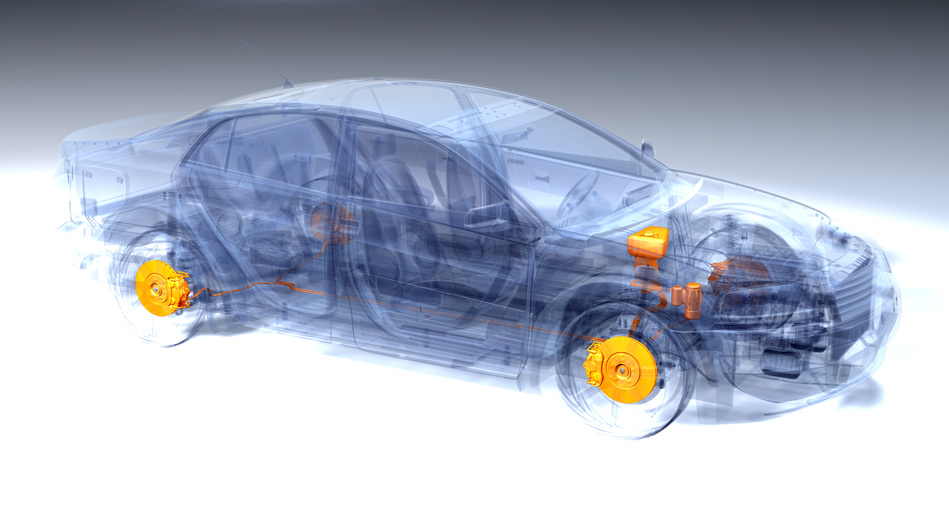Autonomous technologies have sparked rapid change in the auto industry over the past couple of decades. While some of these technologies are brand new and still developing, automatic emergency braking (AEB) systems are high-tech marvels that can dramatically reduce the risk of getting into an accident. Here is a detailed look at the history of AEB systems and what drivers should know about the latest versions of this groundbreaking technology.
The First Automatic Emergency Braking System
The origins of AEB systems date back much further than you might expect. Developed in the 1950s by George Rashid, the first radar-based brake system was specifically designed for use in motor vehicles. Rashid submitted a patent for his system in 1954.
Rashid got the idea for his system from living near Lake Michigan, where thick fog was common and could create a hazard for drivers. Accidents would often happen due to motorists being unable to see other drivers or other obstructions. Rashid invented the radar braking system as a way to warn drivers of obstacles so that they could avoid them.
When tested, this system was successful, but neither it nor other auto-braking systems would become popular until the early 21st century. Development was stalled due to potential issues with reliability and liability. For example, if the system mistakenly caused the vehicle to stop and a rear-end accident ensued, the manufacturer could be considered liable.
Auto manufacturers also began developing radar-based braking systems during the 1950s. Studebaker-Packard produced a similar system to Rashid’s in 1956, which used a small radar in the vehicle’s grill to capture electronic signals and apply the brakes when needed.
However, these manufacturers would not adopt the technology until nearly 50 years later due to high production costs and other manufacturing hurdles.
Predecessors of Modern AEB Systems in the 1990s
In 1992, Mitsubishi introduced a simple distance-ranging safety system in its Debonair vehicles. This was a laser-based system that would send a warning alert to drivers if the vehicle ahead of them was too close. Mitsubishi engineers capitalized on this concept with the Mitsubishi Diamante’s “Preview Distance Control” system, which would automatically slow the vehicle down in this situation.
Although these systems were more aligned with adaptive cruise control than AEB, they were a key predecessor for AEB systems. Eventually, these systems were further developed to incorporate emergency braking as part of a larger autonomous safety system.
The First Commercial Radar-Based Braking Systems
Radar-based AEB systems were first introduced to consumers in May of 2003 when Honda released its Collision Mitigation Braking System as a feature of its Inspire line of vehicles. This system was capable of automatically engaging both light and heavy braking to avoid crashes or reduce the severity of collisions.
Other automakers quickly followed suit over the rest of that decade. Volvo, Toyota, and Mercedes all developed their own systems within a few years. Production of these systems was much more feasible during this decade due to lower hardware costs and increased safety requirements.
Mercedes’ Brake Distronic Plus system was especially influential, as it was the first to use both long- and short-range radar to stop the vehicle completely in anticipation of a collision, even without the driver touching the brakes.
Many of these early commercial AEB systems were found in luxury vehicles, but the technology has spread to encompass a wide range of automakers, models, and budget levels.
Reverse Emergency Braking
While the early commercial AEB systems primarily focused on avoiding front-to-rear collisions, automakers have developed reverse emergency braking technologies that help prevent drivers from causing accidents with the rear end of the vehicle, such as while backing out of a parking space. These systems are often used together with rear-end cameras. Reverse-braking systems automatically stop the vehicle or send an alert to the driver if the rear end is about to get into a collision.
How Effective is Automatic Emergency Braking?
AEB is quickly becoming standard in modern automobiles for a good reason: It works. A study by the Insurance Institute for Highway Safety (IIHS) found that AEB systems reduce front-to-rear collisions by 50 percent. In addition, these systems led to a 56 percent decrease in injuries for those types of crashes. Reverse automatic braking systems were even more effective, leading to a 78 percent decrease in collisions compared to vehicles that only had a reverse camera.
AEB Systems Are Not Guaranteed to Prevent Accidents
While an AEB system is a powerful tool for avoiding accidents, motorists should remember that responsible driving is just as important as ever. Distracted driving can still easily cause an accident even if the vehicle has the latest and best AEB system.
In addition, the technology is not perfect, as some systems may send erroneous alerts or cause the vehicle to stop when there is no accident threat. However, the benefits of AEB systems are clearly well worth the small risk of a rare error. As long as drivers continue to be mindful of the principles of safe driving, an AEB system can help keep them even safer.
